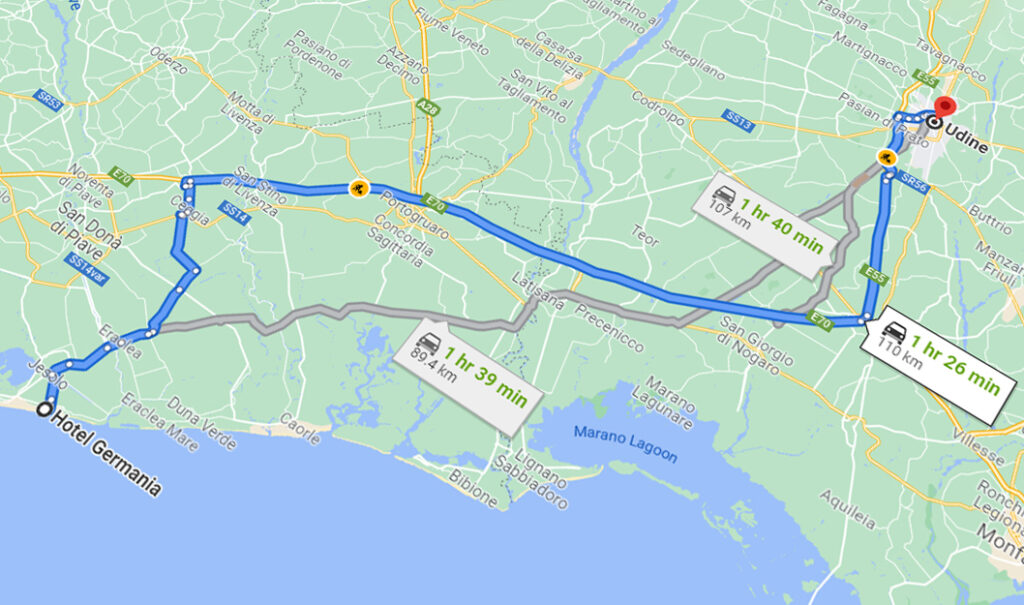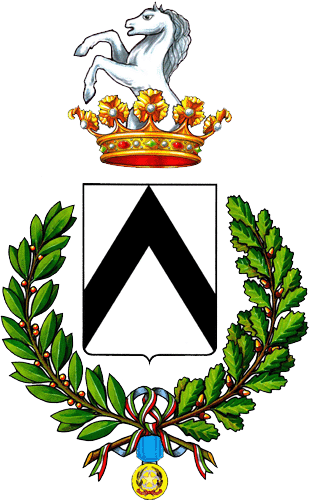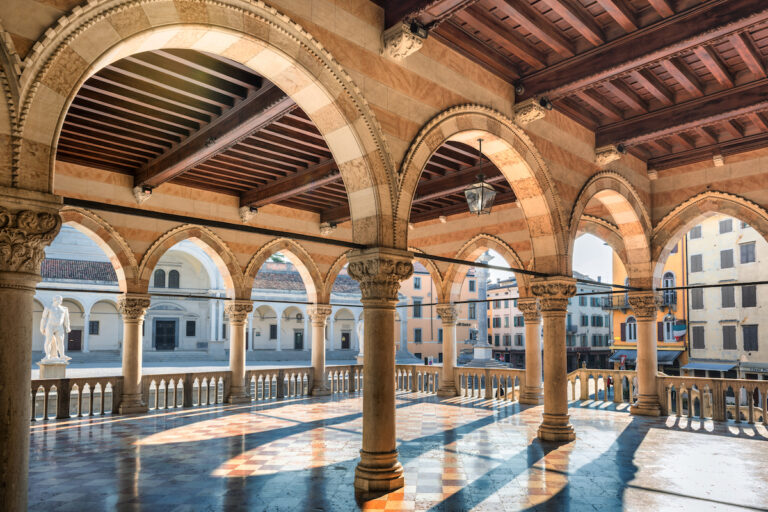On a trip from Jesolo to Udine: add colors to your vacation in Italy!
A small town with an elegant and welcoming atmosphere, where everything is close, within reach. With the sincere smiles of its inhabitants and its delightful historical center.
In Udine, one doesn’t just happen to pass by; you must specifically come here.
And one is never disappointed!
Udine is rich in beauty and places of interest: one of the most enjoyable things is its heart – the streets of the historic center, so stately, understated, and elegant.
The first thing to do in Udine is simply to take a stroll in the center, feeling completely free.
The oldest streets are found near the Udine Castle, which sits atop a rounded hill.
Legend has it that this hill was raised by Hunnic soldiers in the distant year 542 AD to allow their leader Attila to ascend and watch the city of Aquileia burn after setting it on fire…
It’s not true, don’t worry: it’s just a rocky formation over 100,000 years old!
The perfect place to start a thousand trips and excursions? Book a vacation at your Hotel Germania in Jesolo!
www.hotelgermania.net
Phone: +39 0421 381223
E-Mail: info@hotelgermania.net
Udine: crossroads
of European cultures

By 1222, it became one of the residences of the powerful Patriarchs of Aquileia, thanks to Patriarch Bertoldo di Andechs, who moved from Cividale to Udine following an earthquake that damaged his residence (on December 25).
Due to its centrality and location, it was increasingly preferred by the Patriarchs, who later erected the Patriarchal Palace there.
In the 14th century, Udine became the most important city in the region for trade and commerce, surpassing Aquileia and Cividale del Friuli.
In 1420, following the war between Venice and the Patriarchate of Aquileia, the city was conquered by Venetian troops, marking the downfall and end of the temporal power of the Patriarchs.
The city of Udine was devastated, starting in 1511, by a civil war historically known as the ‘crude zoiba grassa,’ which proved to be bloody and quickly spread throughout Friuli.
To worsen the conditions of the population, in the following days, a violent earthquake occurred, leading to numerous fires and the collapse of the city castle.
Lastly, the plague arrived, further deteriorating the situation.
Linked to the ‘Zoiba Grassa’ is the Friulian origin of Romeo and Juliet, two young individuals, Lucina and Luigi, belonging to the rival families of Savorgnan and Da Porto.
The historical events
of brave Udine
Under the rule of the Republic of Venice from 1420 to 1797, Udine became the fifth city of the Republic in terms of importance and population and remained so until the end of the 18th century.
However, with the fall of the Republic of Venice, Udine became French following the Napoleonic campaigns.
Following the Restoration, Udine transitioned to the Lombardo-Venetian Kingdom, a state under the sovereignty of the then Austro-Hungarian Empire.
In 1848, during the First War of Independence, the city revolted against the Austrians along with the rest of Friuli.
The Habsburg army took Palmanova, the temporary seat of government, set fire to many neighboring towns, and ultimately bombarded Udine, which surrendered.
Finally, in 1866, Udine was annexed to the Kingdom of Italy.
❝ Via Mercatovecchio is
the most beautiful
street
in the historic center ❞
The city of Udine, from an urban perspective, retains the typical features of medieval cities.
The city developed around the castle hill at the center, expanding from the 10th century onwards (there were as many as five successive concentric walls until the 15th century, each with its gates and doorways).
Among the most famous monuments, you can admire: the Castle situated on a hill overlooking the city, the Cathedral, the Loggia del Lionello, the Archbishop’s Palace with Tiepolo’s frescoes, Piazza Libertà in Venetian style, and Piazza Matteotti, representing the city’s heart along with Via Mercatovecchio.
As for modern works, the noteworthy mention is the Teatro Nuovo Giovanni da Udine.











